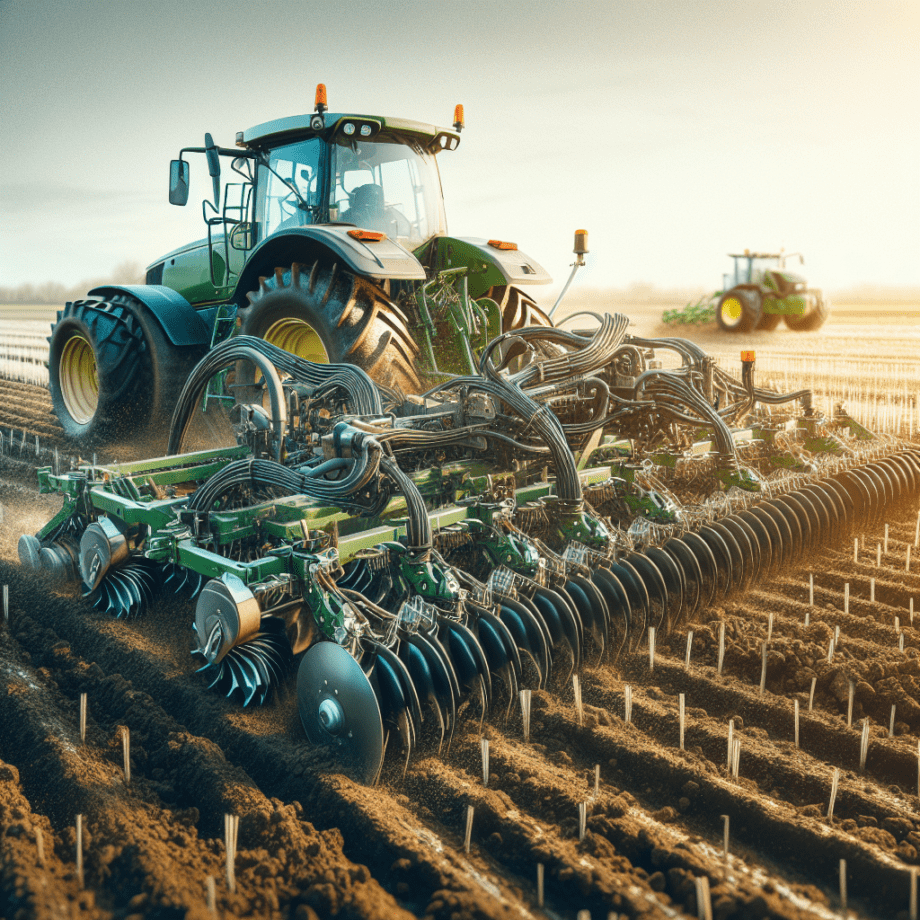Soil preparation is a critical step in the agricultural process, and cultivators play a pivotal role in ensuring that the soil is in optimal condition for planting. This article delves into the importance of cultivators in soil preparation, exploring their functions, types, and the benefits they bring to modern farming practices.
Functions of Cultivators in Soil Preparation
Cultivators are essential tools in agriculture, designed to stir and pulverize the soil before planting. Their primary function is to prepare the soil by breaking up clods, eliminating weeds, and mixing organic matter into the soil. This process enhances soil aeration, improves water infiltration, and creates a fine seedbed that promotes better seed germination and root growth.
Breaking Up Soil Clods
One of the main functions of cultivators is to break up large soil clods that can hinder seed germination and root development. By breaking these clods into smaller particles, cultivators create a more uniform and friable soil structure. This not only facilitates easier planting but also ensures that seeds have better contact with the soil, leading to improved germination rates.
Weed Control
Weeds compete with crops for nutrients, water, and sunlight, which can significantly reduce crop yields. Cultivators help manage weed populations by uprooting and burying them, thus preventing them from growing and spreading. This mechanical weed control method reduces the need for chemical herbicides, promoting a more sustainable and environmentally friendly farming practice.
Incorporating Organic Matter
Incorporating organic matter, such as compost or crop residues, into the soil is crucial for maintaining soil fertility and structure. Cultivators mix these materials into the soil, enhancing its nutrient content and improving its physical properties. This process also promotes the activity of beneficial soil organisms, which play a vital role in nutrient cycling and soil health.
Types of Cultivators
There are various types of cultivators, each designed for specific soil conditions and farming practices. Understanding the different types of cultivators and their applications can help farmers choose the right tool for their needs.
Field Cultivators
Field cultivators are versatile tools used for primary and secondary tillage. They are equipped with multiple tines or shanks that penetrate the soil to a certain depth, breaking up clods and incorporating organic matter. Field cultivators are ideal for preparing large fields and can be adjusted to work at different depths, making them suitable for various soil types and conditions.
Rotary Cultivators
Rotary cultivators, also known as rototillers, use rotating blades to break up and mix the soil. These cultivators are particularly effective in breaking up compacted soil and creating a fine seedbed. Rotary cultivators are commonly used in smaller fields, gardens, and orchards, where precision and maneuverability are essential.
Row Crop Cultivators
Row crop cultivators are designed to work between rows of crops, providing weed control and soil aeration without damaging the plants. These cultivators are equipped with adjustable tines or discs that can be set to the desired row spacing. Row crop cultivators are commonly used in crops such as corn, soybeans, and vegetables, where maintaining clean rows is crucial for optimal growth.
Benefits of Using Cultivators
The use of cultivators in soil preparation offers numerous benefits that contribute to the overall success of farming operations. These benefits include improved soil health, increased crop yields, and reduced labor and input costs.
Improved Soil Health
By breaking up soil clods, incorporating organic matter, and controlling weeds, cultivators enhance soil structure and fertility. Improved soil health leads to better water retention, increased nutrient availability, and enhanced root development. Healthy soil is more resilient to erosion and compaction, ensuring long-term productivity and sustainability.
Increased Crop Yields
Proper soil preparation with cultivators creates an optimal environment for seed germination and root growth. This results in more uniform crop stands, better nutrient uptake, and increased resistance to pests and diseases. Ultimately, these factors contribute to higher crop yields and improved farm profitability.
Reduced Labor and Input Costs
Mechanical weed control with cultivators reduces the need for chemical herbicides, lowering input costs and minimizing environmental impact. Additionally, the efficiency of cultivators in soil preparation reduces the time and labor required for planting, allowing farmers to cover larger areas in less time. This increased efficiency translates to cost savings and higher productivity.
Conclusion
Cultivators are indispensable tools in modern agriculture, playing a crucial role in soil preparation. Their ability to break up soil clods, control weeds, and incorporate organic matter enhances soil health and promotes better crop growth. By understanding the functions, types, and benefits of cultivators, farmers can make informed decisions and optimize their soil preparation practices, leading to increased productivity and sustainability in their farming operations.
